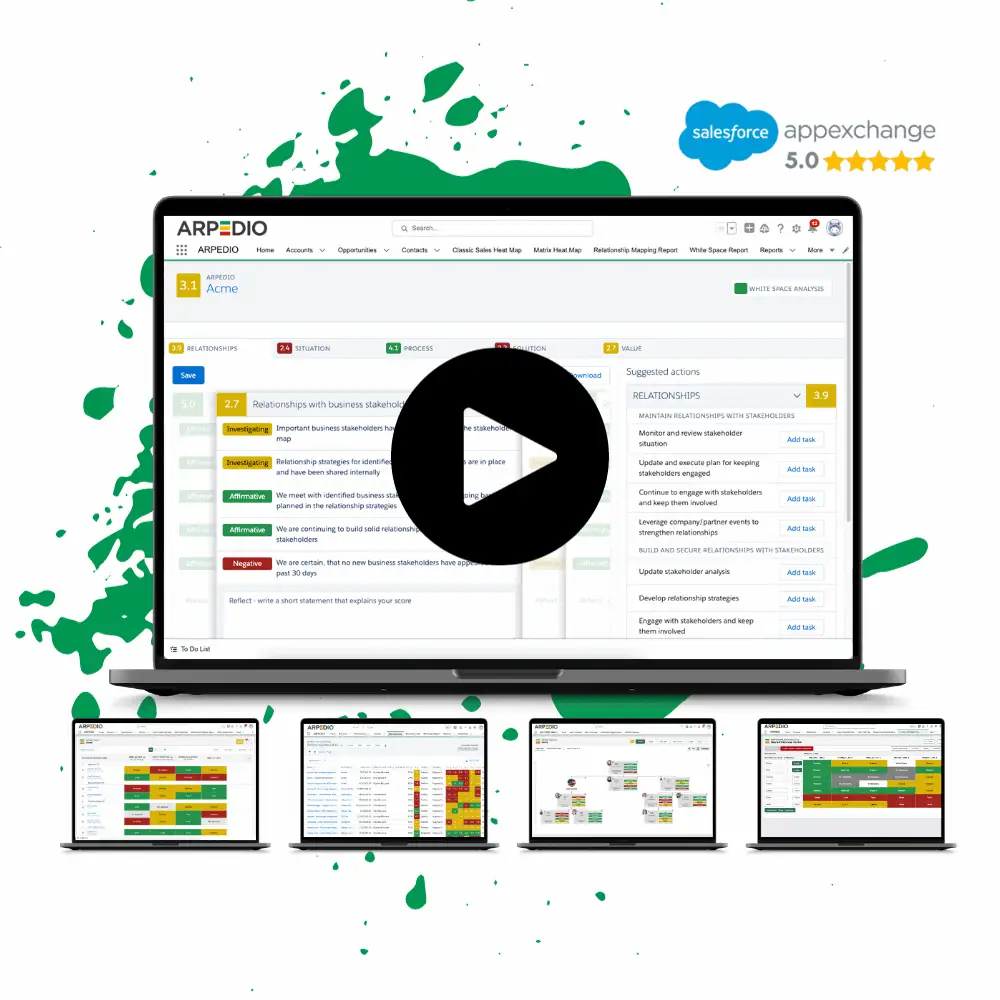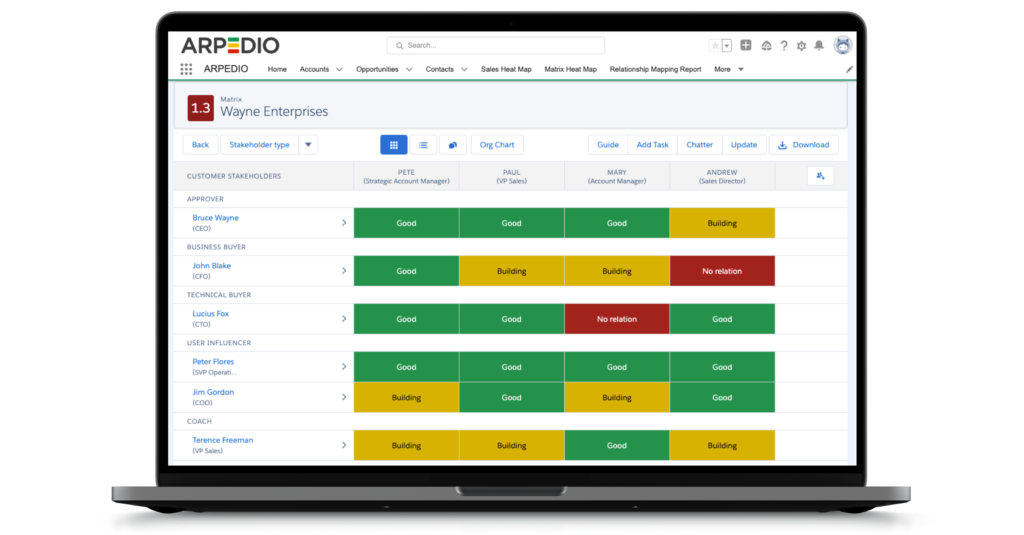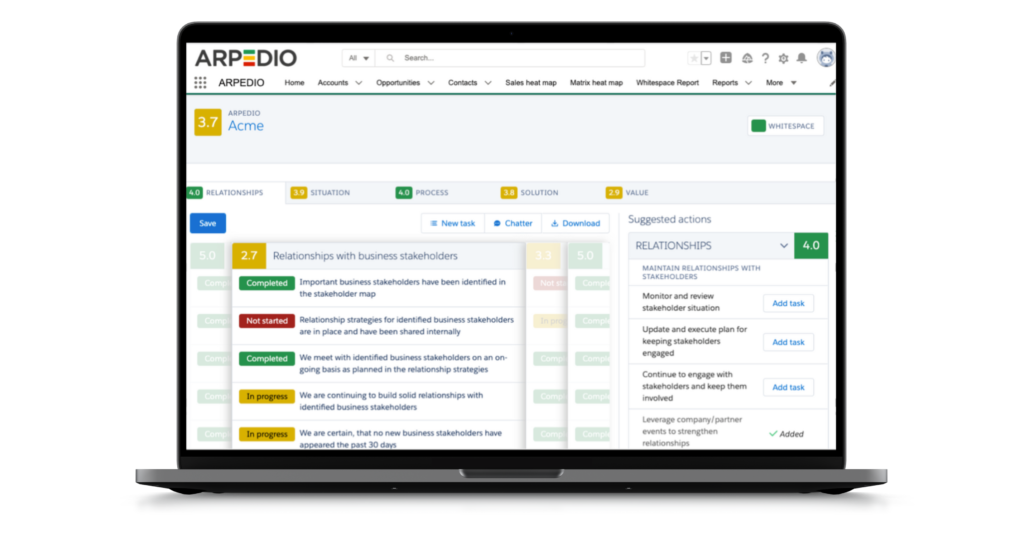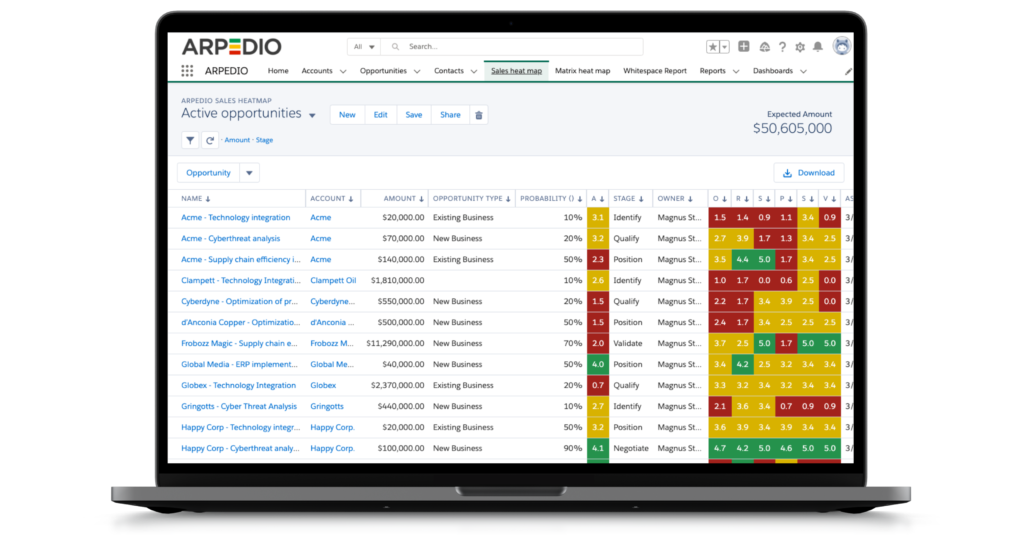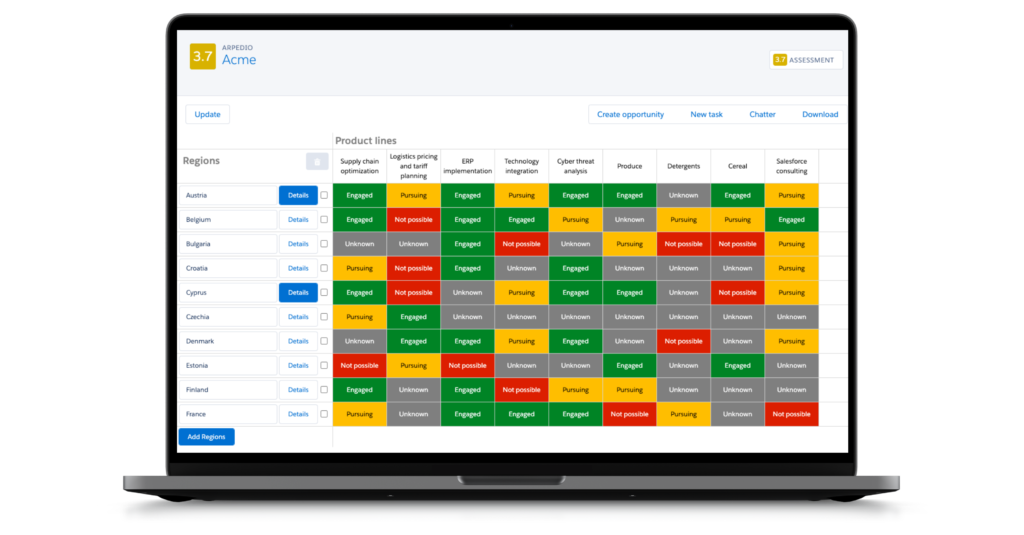Stakeholder management refers to the process of identifying, understanding, and engaging with individuals or groups who have a stake or interest in a project, initiative, or organization. The goal is to achieve shared objectives and create positive outcomes for all stakeholders involved. It involves developing a strategy for communication, collaboration, and relationship-building that considers the needs, expectations, and concerns of all relevant stakeholders. In this post, we’ll explore the essentials of stakeholder management: What it is, why it’s important, and how to implement an effective–and long term–stakeholder management strategy that will help you close more deals and drive revenue growth.
Table of Contents
What is Stakeholder Management?
Stakeholder management is the process of identifying, analyzing, and managing the relationships between a business and its stakeholders. It involves understanding the needs, expectations, and concerns of each stakeholder group and developing strategies to address them.
Stakeholders can have a significant impact on a business, both positive and negative. For example, satisfied customers can lead to repeat business and positive word-of-mouth referrals, while unhappy customers can damage a business’s reputation and lead to lost sales. Similarly, engaged and motivated employees can lead to increased productivity and better customer service, while disengaged employees can lead to low morale, high turnover, and decreased productivity.
Effective stakeholder management involves identifying and prioritizing stakeholders, developing a plan to engage and communicate with them, and monitoring and evaluating the effectiveness of your efforts.
What is a Stakeholder?
Before we go into further detail with stakeholder management, let’s first clarify what an actual stakeholder is: A stakeholder is any individual or group that has an interest in, or can be affected by, the actions or decisions of a business. This includes customers, employees, suppliers, shareholders, government agencies, and the community at large. Stakeholders can have a significant impact on a business, both positive and negative, and it’s essential to identify and manage these relationships effectively.
What are the Different Types of Stakeholders?
There are several different types of stakeholders, each with their own set of interests and concerns. These can be divided into the following four categories:
Internal stakeholders: These are individuals or groups within a business, such as employees, managers, and shareholders.
External stakeholders: These are individuals or groups outside of a business, such as customers, suppliers, government agencies, and the community at large.
Primary stakeholders: These are stakeholders who have a direct and significant impact on a business, such as customers, employees, and shareholders.
Secondary stakeholders: These are stakeholders who have an indirect or lesser impact on a business, such as suppliers and the community at large.
How to Identify Key Stakeholders in an Account
To help you identify key stakeholders in an account, you can follow these steps:
- Research: Conduct research to understand the account, its industry, and its competitors. Look for information about the account’s leadership team, organizational structure, and decision-making processes.
- Identify Roles: Identify the different roles that are involved in the account, such as decision-makers, influencers, users, and beneficiaries.
- Analyze Relationships: Analyze the relationships between these roles, as well as the power dynamics at play. Consider who has the most influence over the account’s decision-making process.
- Map Out Interactions: Map out the interactions between these roles, as well as the channels of communication that they use to interact with each other.
- Prioritize Stakeholders: Based on this stakeholder analysis, prioritize the stakeholders that are most important to engage with, and develop a plan to build and maintain relationships with them over time.
It’s important to remember that identifying key stakeholders is an ongoing process, and it requires regular communication and engagement to ensure that you stay informed about their needs and expectations. Relationship Mapping and Org Chart software can be really helpful in terms of mapping, managing and improving your critical stakeholder relationships.
Why is Stakeholder Management Important?
Now, as a sales professional, you know that your success is directly tied to your ability to build and maintain strong relationships with your customers and other stakeholders. Effective stakeholder management is the key to achieving this, enabling you to identify and engage with the right people, understand their needs and expectations, and tailor your sales approach accordingly.
Stakeholder management is important for several reasons. First, it helps businesses build and maintain trust with their stakeholders. By understanding and addressing their needs and concerns, businesses can build stronger relationships and foster a sense of loyalty and commitment.
Second, it helps businesses make better decisions. By considering the perspectives and input of different stakeholder groups, businesses can make more informed and effective decisions that take into account the interests of all parties.
Third, it can help businesses identify and mitigate risks. By understanding the concerns and priorities of different stakeholders, businesses can proactively address potential issues before they become major problems.
Finally, it can help businesses improve their reputation and brand image. By demonstrating a commitment to responsible and ethical practices, businesses can build a positive reputation and enhance their brand value.
What are the Benefits of Stakeholder Management?
Let’s briefly sum up the numerous benefits effective stakeholder management can bring:
-
Improved Communication
Stakeholder management helps to establish clear and consistent communication channels between an organization and its stakeholders. This leads to better understanding of each other's perspectives, builds trust and loyalty, and reduces misunderstandings.
-
Increased Support
Engaging with stakeholders and addressing their concerns can help gain their support for the project, which can be beneficial in achieving the project's objectives.
-
Risk Mitigation
Effective stakeholder management can help identify potential risks early on in a project and develop strategies to mitigate or address them before they become a problem.
-
Reputation Management
By engaging with stakeholders and addressing their concerns, an organization can enhance its reputation and improve its relationships with stakeholders. Additionally, By demonstrating a commitment to responsible and ethical practices, businesses can build a positive reputation and enhance their brand value.
-
Better Decision Making
Understanding stakeholder interests and concerns can provide valuable insights that can inform decision-making processes, leading to more informed and better decisions that take all parties’ interest into account.
-
Improved Project Outcomes
By effectively managing stakeholder expectations and engaging stakeholders in the project, an organization can increase the likelihood of project success and achieve better outcomes.
Overall, stakeholder management is a critical process that can help organizations build better relationships with stakeholders, manage risks, and achieve their objectives.
How to Implement an Effective Stakeholder Management Strategy
Implementing an effective stakeholder management strategy requires a systematic and strategic approach. Here are some best practice steps to consider:
- Identify and prioritize stakeholders: The first step in stakeholder management is to identify and prioritize your stakeholders based on their level of influence and interest in your business. This involves understanding who they are, what their needs and concerns are, and how they can impact your business.
- Develop a stakeholder engagement plan: Once you have identified and prioritized your stakeholders, the next step is to develop a plan to engage and communicate with them. This involves determining the most effective channels and methods for communicating with each stakeholder group and developing a schedule for regular communication.
- Implement your stakeholder engagement plan: After you have developed your stakeholder engagement plan, it’s time to implement it. This involves actively engaging with your stakeholders and communicating with them on a regular basis. It also involves responding to their concerns and feedback in a timely and effective manner. Don’t forget to listen actively for feedback and concerns and be transparent and honest about your business practices and decision-making processes.
- Monitor and evaluate your stakeholder management efforts: Finally, it’s important to regularly monitor and evaluate the effectiveness of your efforts. This involves tracking key performance indicators (KPIs) and metrics, such as stakeholder satisfaction, engagement levels, and business outcomes. It also involves making adjustments to your stakeholder management strategy based on the feedback you receive and changing circumstances.
Stakeholder Management in Salesforce with ARPEDIO
The buying journey is increasingly hard to navigate for the customer. According to Gartner, the typical buying group for a complex B2B solution involves six to 10 decision makers, and meanwhile, the set of options and solutions available to the customer are expanding as new technologies, products, suppliers and services emerge. These factors make it very difficult for customers to make purchase decisions. In fact, more than 75% of the customers Gartner surveyed described their purchase as very complex or difficult.
Stakeholder management can help accommodate the complexity of the buying journey as it helps to ensure that all stakeholders are informed, aligned, and committed to the success of the decision. Therefore, stakeholder management is also considered a critical process essential for any successful business operation: Effective stakeholder management can help you build trust, improve communication, mitigate risk, enhance reputation, and promote collaboration, resulting in better decision-making, increased productivity, and a more positive impact on the bottom line.
By leveraging tools like ARPEDIO’s Relationship Mapping & Org Chart software, businesses can effectively manage their stakeholder relationships and maximize their chances of success.
Relationship mapping enables you and your sales team to gain a comprehensive understanding of important stakeholders and the internal power structure, ultimately allowing for a more strategic sales approach and alignment with stakeholder priorities. By mapping critical relationships, sales teams can better target pivotal deals and achieve revenue targets.
Ready to map, manage, and improve critical stakeholder relationships directly in Salesforce?
#1 Account-Based Selling Platform
Powerful alone. Superior together.
Boost win rates and reduce sales cycles. Enhance forecast accuracy.

